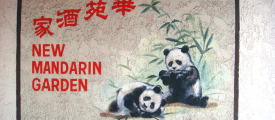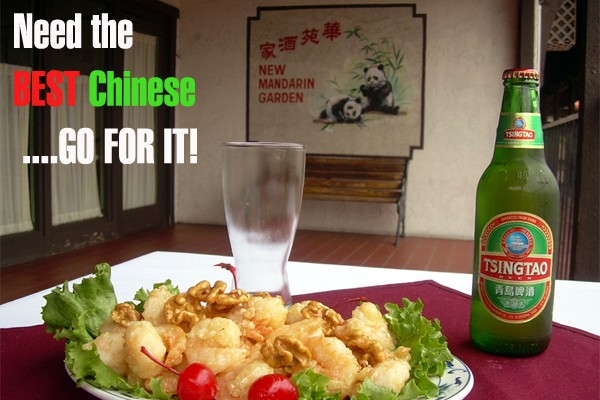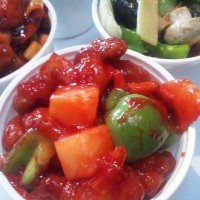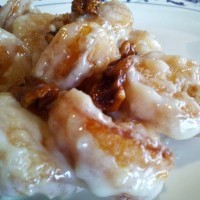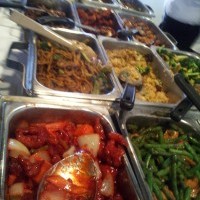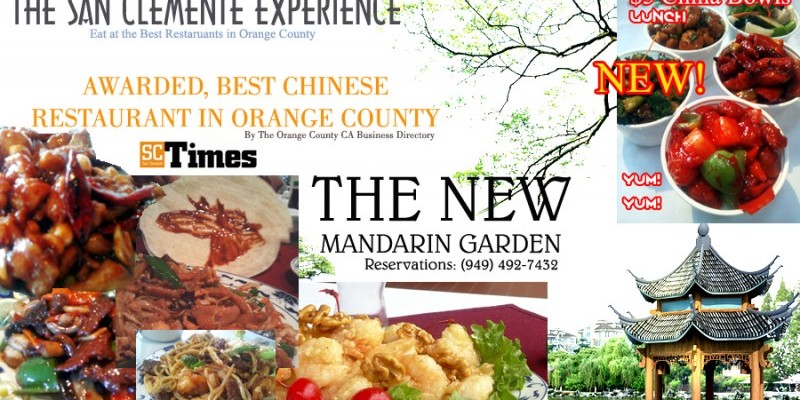
The Introduction of Chinese Food
Date: 04/24/2014
When it comes to food, the Chinese have a common saying, “The masses regard food as their heaven,” which means that food is people’s primal want. It should clearly justify the importance that “eating” holds in Chinese people’s lives. Eating is not just meant to fill the stomach; having food at one’s disposal, being able to consume a good amount of food, and knowing what and how to eat are all viewed as a good “fortune.” Those who promote food culture often use the words of Chinese philosopher Confucius, “diet and love-making, all primal needs of every human being,” finding an aspiring and positive thought basis for such an epicurean lifestyle. There’s probably not another place in this world that has as great a variety of delicious fare as China. If judging by the art and techniques of cooking, aside from France and Italy, perhaps the skills of chefs of no other country can gain recognition from the Chinese.
Extremely developed culinary techniques can make seemingly inedible ingredients, to foreign eyes, into dish after dish of delicious treats by the hands of Chinese chefs. The Chinese cookbook also contains quite an extensive list of foods, including just about anything edible with very few taboos. The Chinese, who see eating as a fortune and life as an art, not only created various kinds of regional food styles in its own vast lands, but have also spread Chinese food culture to far across the seas. Today, in this world where even the farthest corners can seem as close as one’s backyard, Chinese food can be enjoyed in each and every metropolitan throughout the world.
Like many other countries with a vast territory, Chinese cuisines are differentiated largely by its northern and southern regional tastes. Although the best quality rice in China is grown in its northeastern regions, people in those regions, however, just as other northerners, prefer to eat pasta or pastry instead. In the north, classic dishes include Beijing’s lamb hotpot (fondue) and roast duck, and Shandong province’s Lu style cuisines. In the south, the principal foods (foods that are the main source of carbohydrates and dietary fibers, e.g. bread and cereal in the west) are rice-based. A relatively greater variety of dishes are found in the south. There you can find the hot and heavily spiced Sichuan food, Xiang (Hunan) food, sweet and delicate Huaiyang food and the Yue (Cantonese) style which are mosdy seafood and soups. Thus foreigners who have been to China are often pleasandy surprised by the great differences in taste and food types by region.
Having Chinese food not only indulges people’s sense of taste, the sense of sight is also entertained. The Chinese culinary arts rely on the canon of “color (aesthetic beauty), aroma, and taste,” missing any one element would not make a good dish. To make the food pleasing to the eye, usually the appropriate meat and non-meat ingredients are selected; it would include a single main ingredient and two or three secondary ingredients of different colors. Blue, green, red, yellow, white, black and brown sauce colors are to be mixed inthe right combination. Through proper cooking techniques, aestheticism in food is achieved. “Aroma” is achieved by using the right spices, such as scallion, ginger, garlic, cooking wine, aniseed, cassia bark, black pepper, sesame oil, shiitake mushrooms and so on, to stimulate the appetite with the aroma from the cooked food. When preparing food, techniques such as fry, stir-fry, roast, steam, deep-fry, quick-fry, simmer and others are put to use, with the goal of preserving the natural taste and juices of the food. One can also add the right amounts of soy sauce, sugar, vinegar, spices, spicy pepper and other seasoning, making the dishes taste salty, sweet, sour, hot and much more. With tomatoes, turnip, cucumber and other sculptural vegetables to create elegant and intricate decorations to the plate, and the use of exquisite fine china for dining ware, Chinese cuisines really become a true art form complete with aesthetic beauty, wonderful aroma, and great taste.
Americans rely on calculating calories and cholesterol content from food to maintain good health and a shapely figure.
The Japanese are into trying various health foods to preserve an everlasting youth. Different from both, the Chinese way of looking at health lies in its philosophy of “food and medicine sharing the same roots.” The firm belief that food has healing powers and therapeutic effects has led to the introduction of many edible plants and herbs. And with the benefits of disease prevention and health preservation, they have become regular dishes in Chinese homes. At the same time, there is the pursuit of refinement in cooking. The amount of food and mixing of ingredients is very essential, and it is recommended that meats and non-meats be used in combination. Whether making dishes or soups, foods with suited nutritional contents are put in combination so as to achieve the goal of balanced nutritional intake. And it is recommended to dine until the stomach is about 70% to 80% full, as this practice is passed down the generations as a secret to long life.
At the dinner table, the Chinese has their own set of manners and customs. When dining, the eater must be seated. When people of all ages and both sexes sit at the same table, the elderly must be seated with priority. One must eat food held with chopsticks; when having soup, a soupspoon must be used. There’s also to be no noise when eating and so on. These etiquettes have continued to this day, but the biggest change is none other than the fact that more and more Chinese have proactively given up the rule of “No talking when eating.” Indeed, when dining with the Chinese, one would frequendy encounter a dining environment full of chatting and noises. Many people who have their mouths full still intend to chat away. This phenomenon may be due to the reason that contemporary Chinese have come to consider dining as an important social opportunity. People need, at this time, to relax and talk about certain soothing and joyous topics to increase understanding between those sitting at the table.
In recent years, due to the accelerated development of industries and commerce, aside from traditional menu-ordered food services, Chinese fast foods have dawned onto the scene. And not only this, cuisines from every corner of the world have, one after another, made their grand appearances in all major cities in China; Italian pizza, French gourmet, Japanese sushi, American burgers, German beers, Brazilian barbeque, Indian curry, Swiss cheese and more. Anything one can think of can be found, a true all-inclusive list of dining choices. It justifies the saying “Eat in China” even more so.
ARTICLE SOURCE: http://www.articlesbase.com/food-and-beverage-articles/the-introduction-of-chinese-food-868426.html
AUTHOR: Jason Chang



